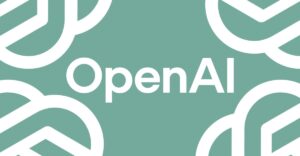New Safeguard Implemented in OpenAI’s Latest AI Models to Mitigate Biorisks

OpenAI’s New Safety Measures for AI Models
OpenAI has recently introduced a monitoring system aimed at overseeing its latest AI reasoning models—o3 and o4-mini. These models have raised concerns due to their potential to provide harmful information related to biological and chemical threats. The new system is designed to prevent the models from giving advice that could be misused for malicious purposes.
Enhancements and Risks of o3 and o4-mini
According to OpenAI, the capabilities of o3 and o4-mini represent a significant improvement over earlier models. However, these advances also bring new challenges, especially if such models fall into the wrong hands. Internal benchmarks have shown that o3 performs particularly well in answering inquiries about the creation of biological threats. To address these risks, OpenAI has implemented a dedicated monitoring system termed a “safety-focused reasoning monitor.”
How the Monitoring System Works
The newly developed monitor is custom-designed to interpret OpenAI’s content policies, functioning alongside o3 and o4-mini. Its main role is to detect prompts that are related to biological and chemical risks and to instruct the models to refrain from offering any advice on these sensitive topics.
- Testing the Monitor: OpenAI carried out extensive testing, involving approximately 1,000 hours of work from red teamers. These experts identified “unsafe” discussions related to biorisks in o3 and o4-mini.
- Effectiveness Rate: During simulations of its blocking logic, the models successfully declined to respond to risky prompts 98.7% of the time.
Despite the promising effectiveness of the monitor, OpenAI understands that users might find new ways to bypass these restrictions. This awareness has led the company to emphasize the need for ongoing human oversight alongside the automated system.
Risk Assessment of the New Models
While o3 and o4-mini have not crossed OpenAI’s threshold for "high risk" in relation to biorisks, there are still notable distinctions compared to previous models like o1 and GPT-4. Early assessments indicated that these newer versions were more adept at answering queries related to the development of biological weapons.
Ongoing Monitoring and Safety Framework
OpenAI is committed to continuously evaluating how its models could assist malicious users in creating chemical and biological threats. This commitment is outlined in the company’s updated Preparedness Framework. It highlights OpenAI’s proactive approach to understanding the potential misuse of its technologies.
To mitigate risks associated with its models, OpenAI is increasingly incorporating automated systems. For instance, the reasoning monitor deployed for the image generator in GPT-4o aims to prevent the generation of harmful content, such as child sexual abuse material (CSAM).
Criticisms and Concerns
Despite these advancements, some researchers have voiced concerns over OpenAI’s safety measures. A red-teaming partner, Metr, noted limited time was allocated to assess o3 for deceptive behaviors. Furthermore, OpenAI chose not to issue a safety report for the newly launched GPT-4.1 model, raising questions about the company’s dedication to prioritizing safety in its AI development efforts.
In summary, OpenAI is making robust efforts to enhance the safety of its latest AI models. While it has put systems in place to monitor harmful inquiries, ongoing scrutiny and collaboration with researchers will be crucial to ensure that these technologies are used responsibly.






